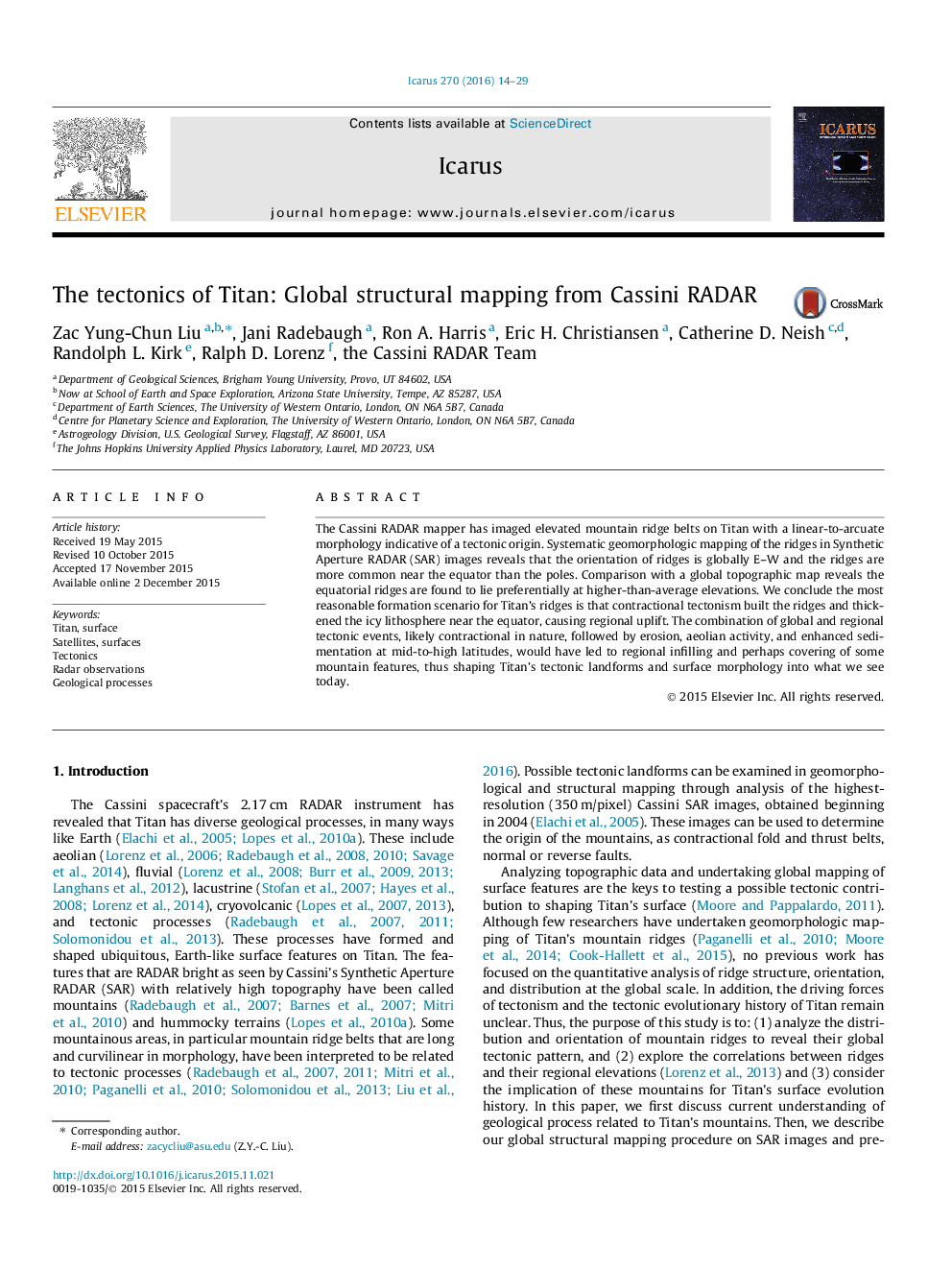| Article ID | Journal | Published Year | Pages | File Type |
|---|---|---|---|---|
| 1772924 | Icarus | 2016 | 16 Pages |
•Geomorphologic and structural map of Titan’s mountain ridges.•The orientation of ridges is nearly E–W in both equatorial and polar regions.•Ridges are more abundant in equatorial regions.•Equatorial ridges on Titan preferentially lie at higher-than-average elevation.•Contractional tectonism likely built the ridges on Titan.
The Cassini RADAR mapper has imaged elevated mountain ridge belts on Titan with a linear-to-arcuate morphology indicative of a tectonic origin. Systematic geomorphologic mapping of the ridges in Synthetic Aperture RADAR (SAR) images reveals that the orientation of ridges is globally E–W and the ridges are more common near the equator than the poles. Comparison with a global topographic map reveals the equatorial ridges are found to lie preferentially at higher-than-average elevations. We conclude the most reasonable formation scenario for Titan’s ridges is that contractional tectonism built the ridges and thickened the icy lithosphere near the equator, causing regional uplift. The combination of global and regional tectonic events, likely contractional in nature, followed by erosion, aeolian activity, and enhanced sedimentation at mid-to-high latitudes, would have led to regional infilling and perhaps covering of some mountain features, thus shaping Titan’s tectonic landforms and surface morphology into what we see today.
